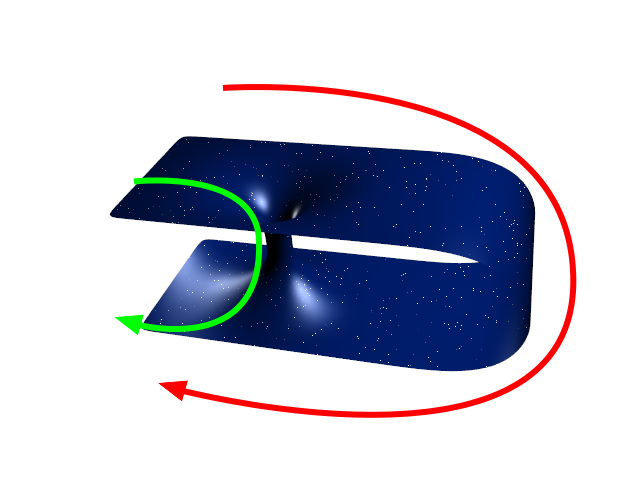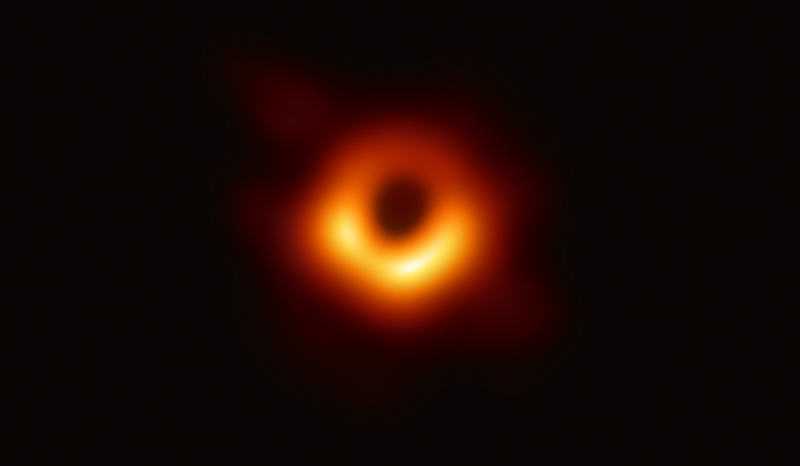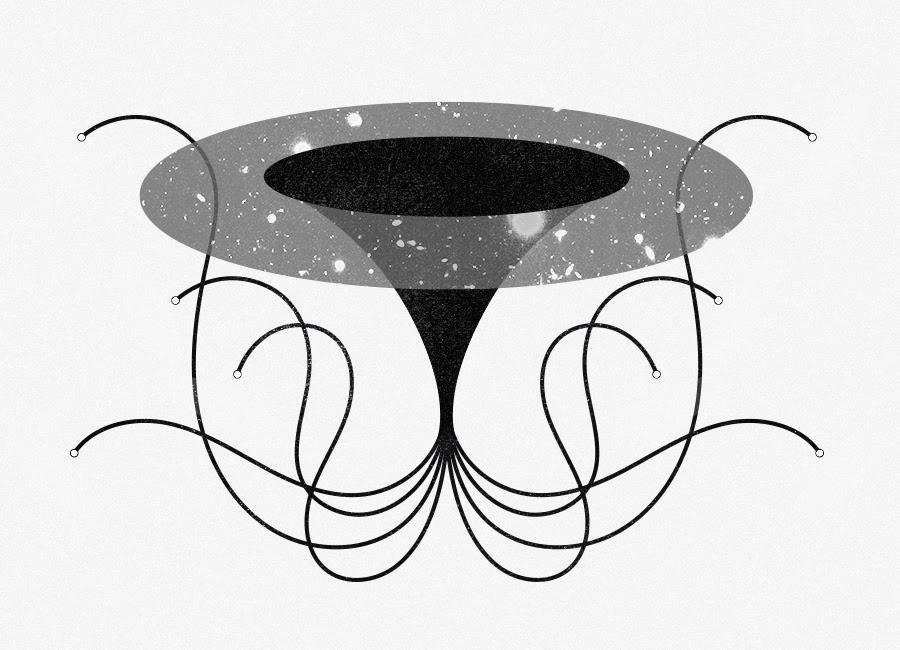Editor’s Note: I’ve always wanted to feature real life science and exploration in conjunction with SciFi and how one inspires the other. Huge thanks to Vega Blazar for being the first in what I hope can become a series of like minded post! – Katia Sae

“You are sucked through the wormhole…” As dedicated explorers of New Eden, we are quite familiar with this flavor text upon entering a wormhole in EVE Online. For me, it’s a sign that fun and adventure are about to begin. In part, the inclusion of wormhole mechanics and wormhole space in EVE makes the various playstyles of Signal Cartel possible. Thank you wormholes! But how much do we actually know about wormholes? Are they real or just complete fiction? Let’s go exploring for some answers.
First, what is a wormhole? The term was coined by physicist John Wheeler in 1957. However, the first mathematical proof of the structure was demonstrated in 1935 by Albert Einstein and Nathan Rosen, which is why wormholes are more formally called Einstein-Rosen Bridges. A wormhole is a theoretical shortcut through the curvature of spacetime based on solutions to the Einstein field equations of general relativity. In essence, a wormhole can be visualized as two distant “mouths” in spacetime connected by a “throat”.

Thus, this tunnel through spacetime could allow for much shorter travel between two distant points than traveling through normal space (green arrow vs the red arrow in the above illustration). Everybody loves a shortcut, right?
If humans ever want to explore distant parts of our universe, we will definitely need to find a cosmic shortcut to deal with the immensity of space. Why? Well, nothing can travel faster than the speed of light (unless you read science fiction), which is 300,000,000 meters per second. If human explorers were somehow able to travel at this speed, it would take us 2.5 million years to reach Andromeda, the galaxy closest to our own Milky Way. To cross the observable universe at the speed of light, it would take about 90 BILLION years. Our universe is utterly overwhelming. For reference, the maximum speed achieved by humans traveling through space is 11,082.5 meters per second during NASA’s Apollo 10 moon mission in 1969.
So, do wormholes actually exist? As of now, wormholes could exist, but scientists just don’t know if they do or not. Humans have never observed an actual wormhole. In fact, the wormhole’s one-mouthed cousin, the black hole, which has been much more thoroughly studied and even imaged for the first time in 2019 (see below), remains riddled with mysteries of its own.

One such mystery is the black hole information paradox. Black holes are intense regions of inescapable gravity and it is believed that anything that falls past the event horizon is irretrievable. Thus, the black hole seems to violate a principle of quantum mechanics, which states that the present always preserves information about the past. One possible solution to the paradox derives from quantum entanglement. The entangled particles inside and outside the black hole could be linked via wormholes, which provide tunnels for information to escape the interior of a black hole. The visualization is quite startingly and conjures images of H.P. Lovecraft’s Cthulhu.

Returning now to a more earthly setting, in 2015, scientists from Spain created a magnetic wormhole in a laboratory. The device is capable of transferring an electromagnetic field from one point to another. Thus, the device acts as a spatial wormhole as if the magnetic field passes through a magnetically invisible tunnel. While the magnetic wormhole is not the same spacetime wormhole proposed by Einstein and Rosen, the potential applications could include advances in MRI medical imaging and even the future development of an invisibility cloak!
For brevity, we won’t touch upon the scientific ideas that spacetime wormholes are likely extremely small, highly geometrically unstable, possibly more circuitous, potential portals to other universes, or even the implications for time travel since we are shortcutting through the spacetime continuum. For now, wormholes are the realm of theoretical physicists and science fiction writers, so let’s move on to their first appearance in sci-fi as my head is starting to hurt.
Wormholes have been widely used as a literary device in science fiction as a means to bypass Einstein’s speed limit (the speed of light), to travel through time, and to enter other universes. In 1900, L. Frank Baum appears to have been the first writer to use wormholes in a work of fiction. In his iconic children’s novel, The Wonderful Wizard of Oz, Dorothy is swept up into a tornado that transports her (and her little dog too!) from Kansas, USA to the decidedly different land of Oz. In this instance, the tornado acts as a portal through spacetime to another dimension. Since then, wormholes have made numerous appearances in books, movies, TV shows, and video games, including in our beloved EVE.
So next time you are piloting your cloaky frigate through a wormhole, take a deep breath and admire its beauty – sometimes fact is stranger than (science) fiction.
References:
Discover Magazine – If Wormholes Exist, Could We Really Travel Through Them?
Independent – Scientists in Spain create first ever ‘magnetic wormhole’ in lab
Live Science – Building a Wormhole with Cosmic Strings
Lock Haven University – Theory of Perpetual Motion Machines
NASA – Black Hole Image Makes History
Nature – A Magnetic Wormhole
Quanta Magazine – The Most Famous Paradox in Physics Nears Its End
Quanta Magazine – Why Stephen Hawking’s Black Hole Puzzle Keeps Puzzling
Quanta Magazine – Wormholes Untangle a Black Hole Paradox
Scientific American – What exactly is a ‘wormhole’?
Space.com – Human Space Flight Records
The Journeying Planetarian – 1000 Things You Didn’t Know About the Universe
The Oklahoman – Stargazing: Anyone up for a trip through a wormhole?
Wikipedia – Observable Universe
Wikipedia – Wormhole
Wikipedia – Wormholes in Fiction

